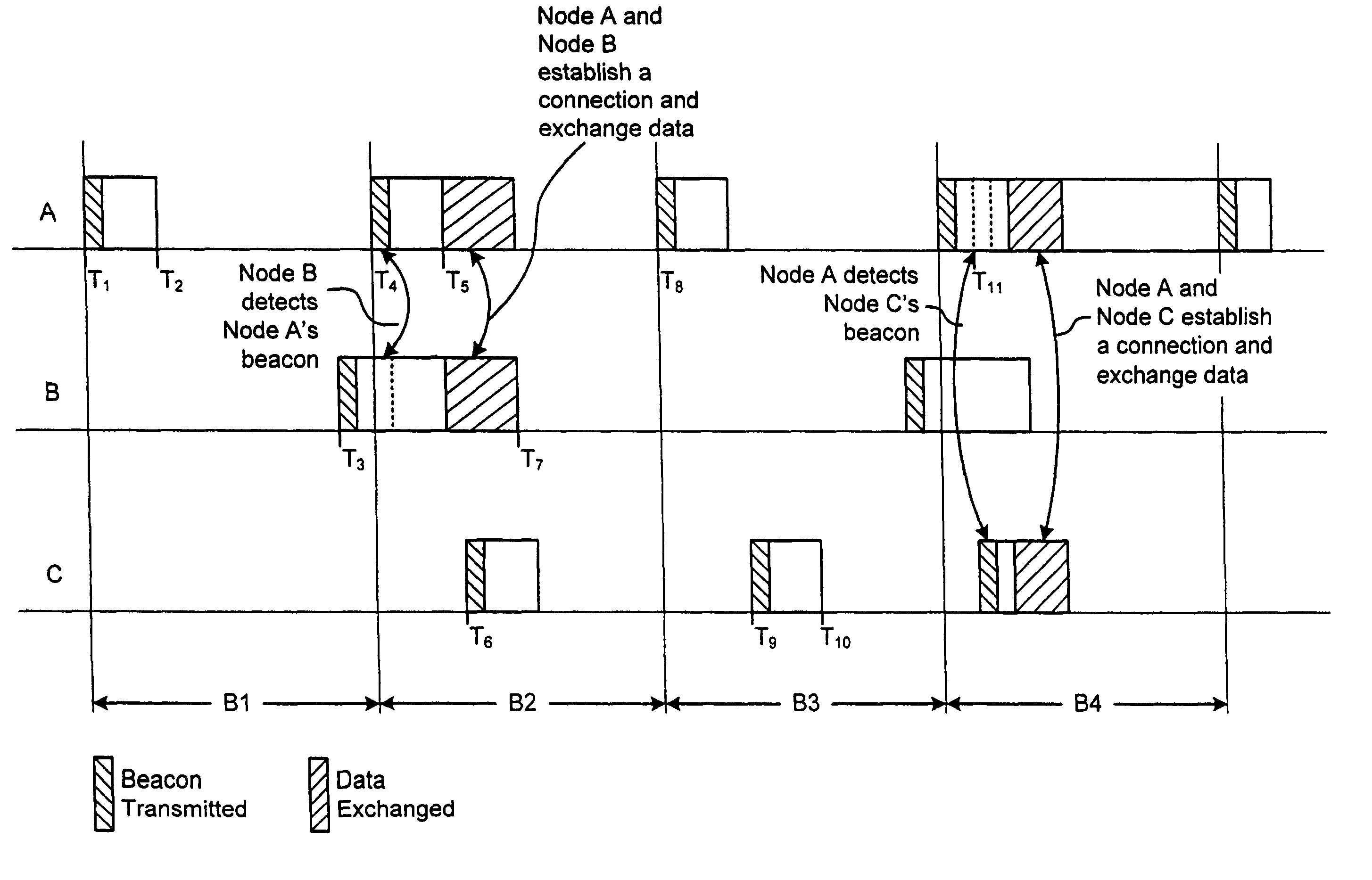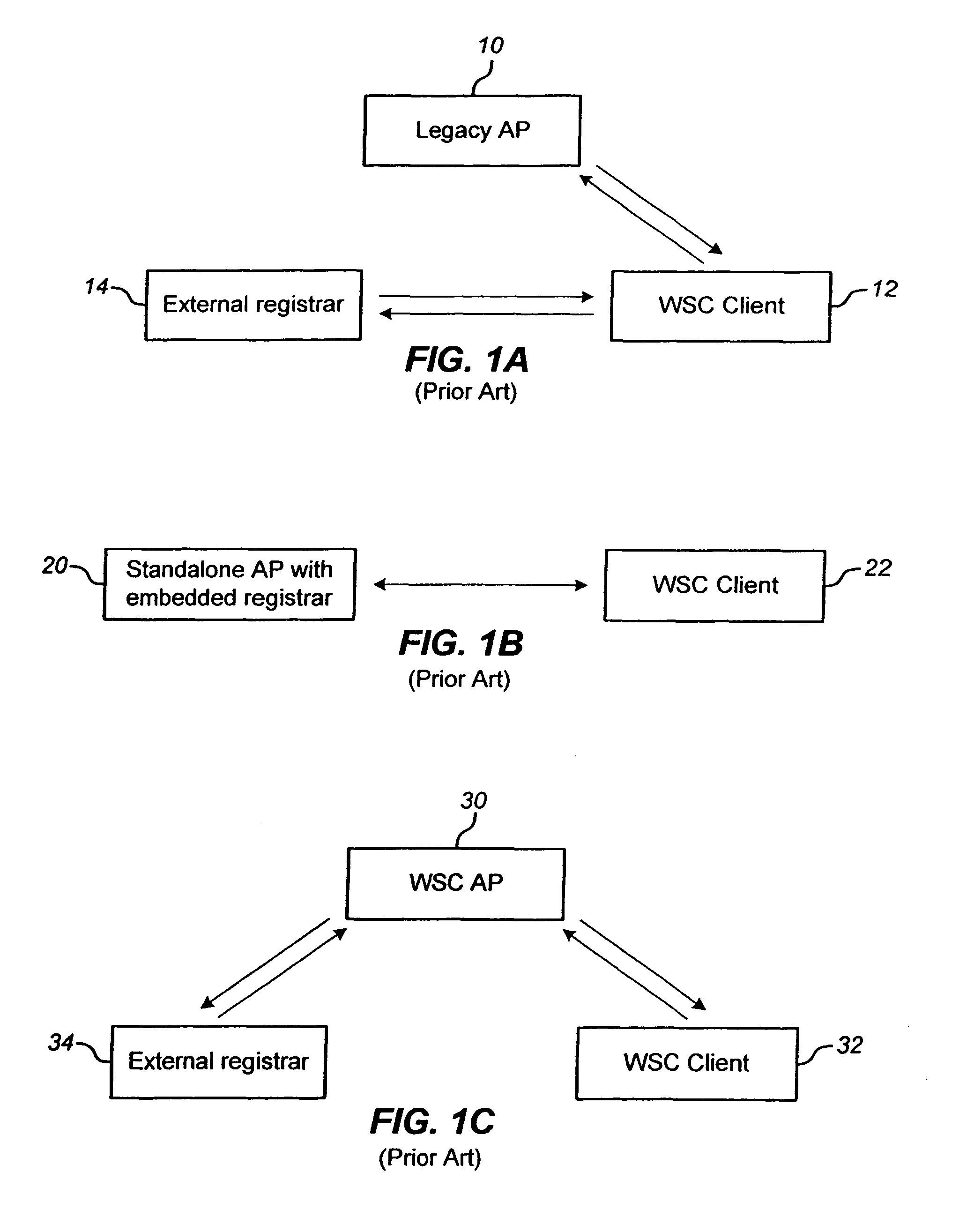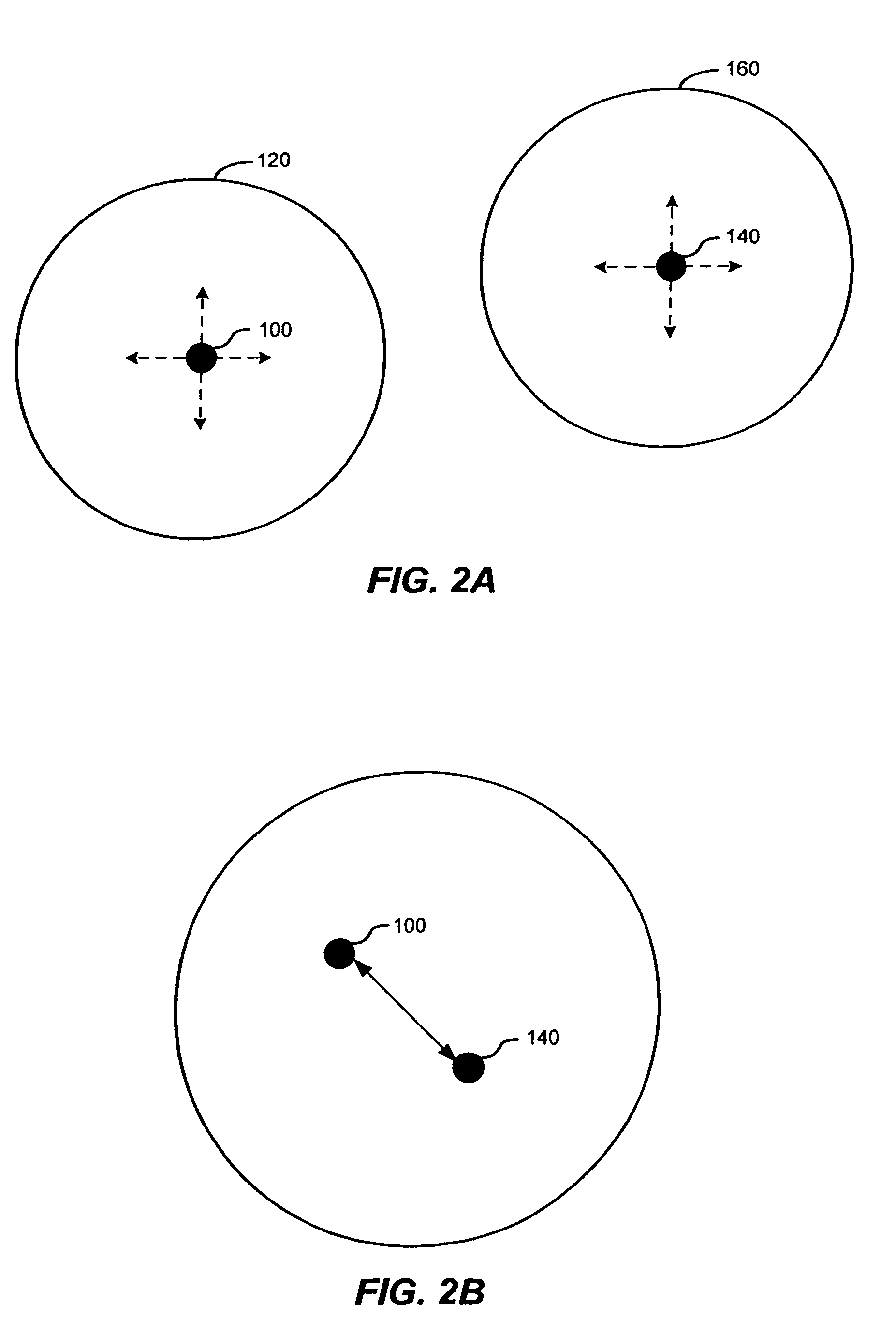Power save mechanisms for dynamic ad-hoc networks
a dynamic ad-hoc network and power saving technology, applied in the field of wireless communication networks, can solve the problem that wireless devices spend a substantial amount of time without a network connection
- Summary
- Abstract
- Description
- Claims
- Application Information
AI Technical Summary
Benefits of technology
Problems solved by technology
Method used
Image
Examples
Embodiment Construction
[0041]Techniques for establishing a dynamic ad-hoc wireless network are disclosed. A node transitions between wake and sleep modes during periods defined as beacon intervals. Before a network connection is established and while it is awake, the node transmits network connection request and also listens for network activity. If a beacon or response message is not detected while the node is listening, the node enters sleep mode and thereby conserves power. The node optionally changes the duration of its detection period and / or the position relative to the start of each beacon interval at which it listens for network activity. Information elements are optionally included with the transmitted beacons or response messages.
[0042]FIG. 2A illustrates nodes configured to participate in dynamic, ad-hoc wireless networks according to an embodiment of the present invention. Nodes 100, 140 move arbitrarily with respect to each other. As shown, nodes 100, 140 are physically separated and neither ...
PUM
 Login to View More
Login to View More Abstract
Description
Claims
Application Information
 Login to View More
Login to View More - R&D
- Intellectual Property
- Life Sciences
- Materials
- Tech Scout
- Unparalleled Data Quality
- Higher Quality Content
- 60% Fewer Hallucinations
Browse by: Latest US Patents, China's latest patents, Technical Efficacy Thesaurus, Application Domain, Technology Topic, Popular Technical Reports.
© 2025 PatSnap. All rights reserved.Legal|Privacy policy|Modern Slavery Act Transparency Statement|Sitemap|About US| Contact US: help@patsnap.com



